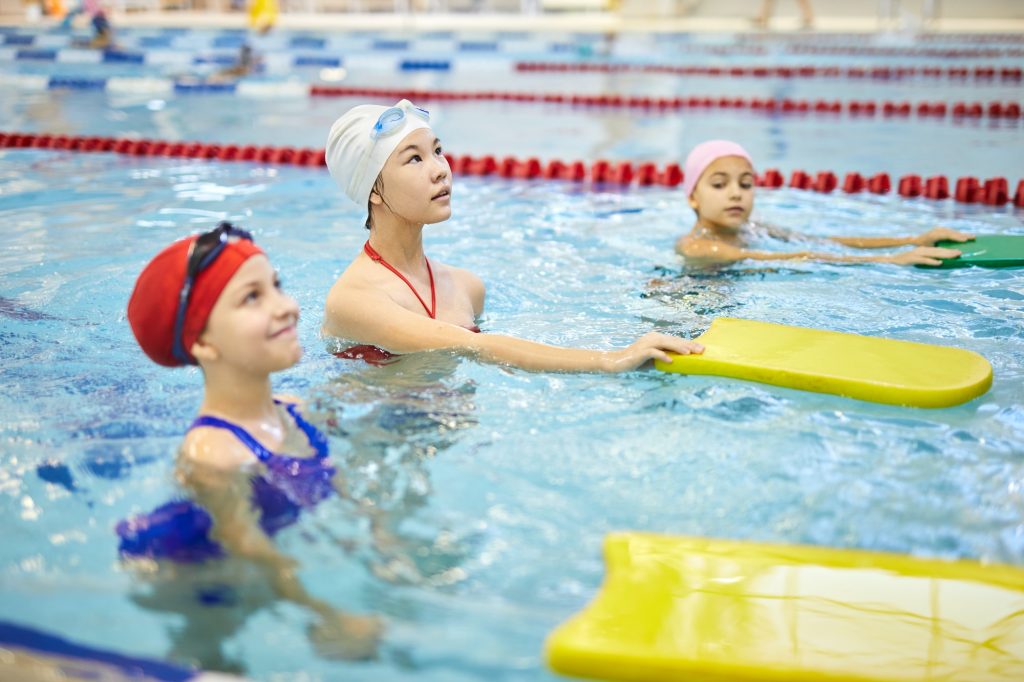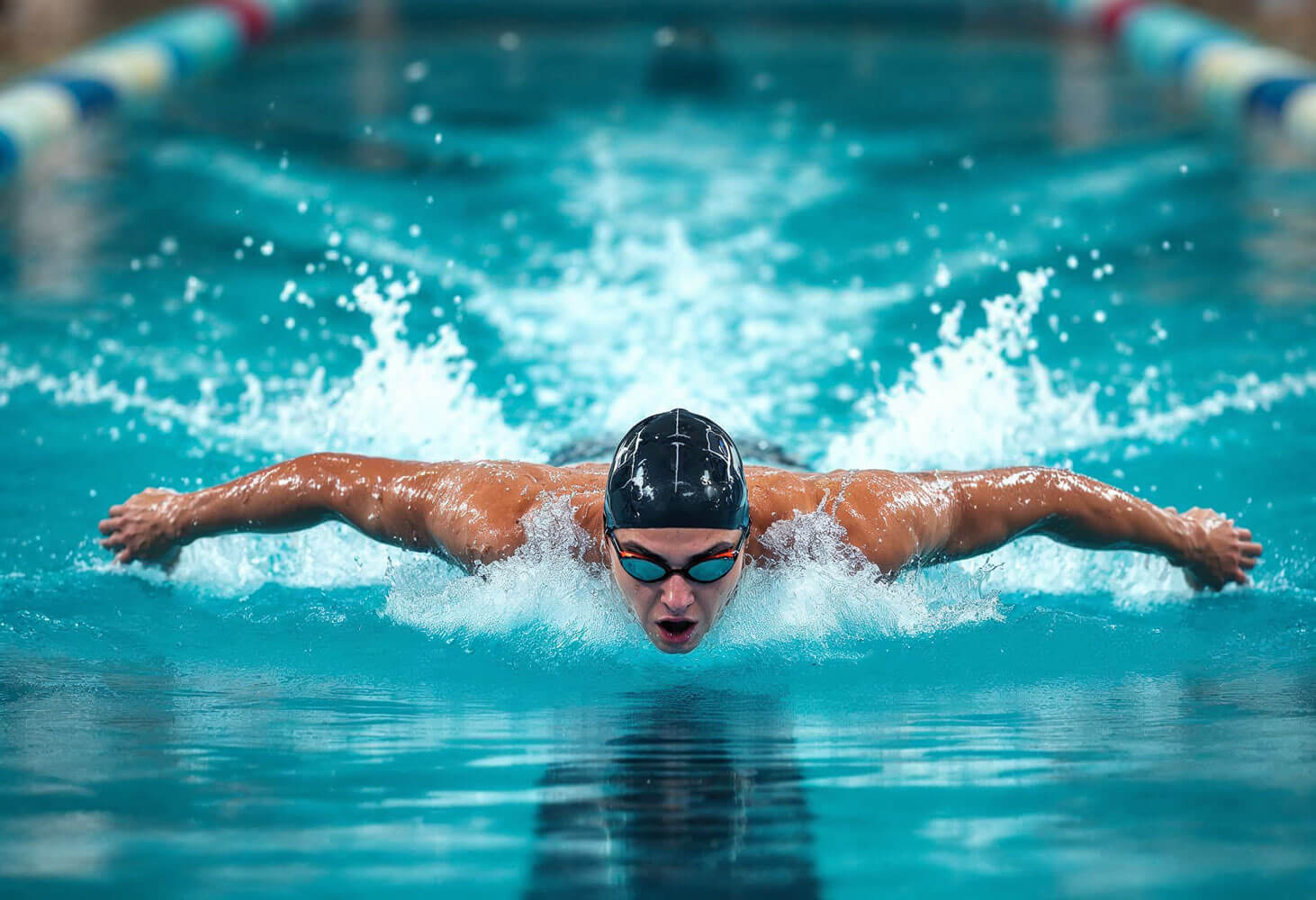Breath control is the cornerstone of a swimmer’s success, and mastering how and when to breathe can make all the difference in performance and endurance in the water. For instance, regulating your breathing correctly can help reduce fatigue, maintain a consistent rhythm, and even shave seconds off your lap times. So, given its importance, we dedicated this blog to everything related to breathing for swimmers to help you take your swimming to the next level by unlocking the power of breath control and maximizing your potential in the pool.
The Science Behind Breath Control for Swimmers
Breathing is not just about taking in oxygen; it’s about how efficiently the body utilizes it. As we established earlier, proper breath control helps optimize the oxygen supply to muscles, keeping swimmers from becoming fatigued too quickly. Oxygen not only helps in maintaining energy but also aids in the recovery process. Plus, the ability to breathe efficiently also reduces the amount of lactic acid buildup in muscles.
In competitive settings, where every millisecond counts, being able to control your breath can make or break your race. Mastering breath control, therefore, is essential for improving stamina and maintaining peak performance across any swim distance.
Best Breathing Techniques for Swimming You Should Know
Breathing is not just inhaling and exhaling; there are many breathing techniques that swimmers employ to enhance their performance and stamina in the water. Here are some of the most effective techniques swimmers can practice.
-
Diaphragmatic Breathing (Belly Breathing)
Diaphragmatic breathing, also known as belly breathing, is a technique that focuses on using the diaphragm rather than the chest to breathe. This type of breathing allows for deeper, slower breaths, which helps increase lung capacity and oxygen intake.
To practice diaphragmatic breathing, place one hand on your chest and one on your belly. As you inhale, ensure that your belly rises, not your chest, signifying that the diaphragm is engaged.
-
3-3-3 Breathing Drill (Freestyle)
The 3-3-3 breathing drill is a valuable exercise for improving breath control in freestyle swimming. The drill encourages swimmers to inhale for three strokes, hold their breath for three strokes, and then exhale completely in the next three strokes.
This rhythm ensures that you’re not overexerting yourself, while also allowing your body to get used to holding your breath for short periods. By alternating sides, swimmers can improve their bilateral breathing technique, which keeps the stroke balanced and symmetrical, making them more efficient in the water.
-
2-1-2 Breathing Drill (Butterfly)
In the butterfly stroke, breath control is essential due to the increased physical demand. The 2-1-2 breathing drill involves breathing every two strokes, holding the breath for one stroke, and then exhaling during the second stroke. This rhythm helps maintain a steady flow of oxygen while keeping the body relaxed during the demanding motion of the butterfly.
-
Exhale Underwater
In this technique, you should focus on exhaling slowly and steadily through your nose or mouth while your face is submerged. This ensures that you don’t waste energy holding your breath and prevents the feeling of being out of breath when you come up to inhale. By practicing controlled exhalation, swimmers can avoid panic and keep their breathing patterns in sync with their stroke.
-
Box Breathing
Box breathing is a simple but effective technique used to calm the nervous system and improve overall breath control. To perform box breathing, inhale for a count of four seconds, hold for four seconds, exhale for four seconds, and hold again for four seconds. This rhythmic breathing technique can be practiced both in and out of the pool to build lung capacity, reduce stress, and improve breath efficiency during swims. It’s particularly useful when preparing for intense laps or competition, helping to center your focus and reduce anxiety.
How to Develop a Breathing Rhythm That Works for You
Every swimmer’s body is different, and finding the right breathing rhythm is crucial for maintaining performance and endurance. The key to developing a successful breathing rhythm is consistency—start by focusing on a steady inhale and exhale pattern that matches your stroke. Over time, practice adjusting the intervals and breath timing to find what feels most natural.
By experimenting with different techniques and practicing regularly, you’ll be able to find a rhythm that feels comfortable and sustainable, helping you swim longer with less effort.
Training Breath Control: Exercises to Improve Lung Capacity
There are several exercises swimmers can incorporate into their training routine to increase lung capacity, such as underwater hypoxic drills, dryland breath-hold exercises, and long-distance swimming with longer intervals between breaths. Additionally, practicing deep breathing exercises outside of the pool, such as diaphragmatic breathing or yoga, can help improve overall breath control and lung capacity.
Piranha Academy: Master Breath Control with Expert Coaching
If you’re looking to elevate your breath control and overall swimming performance, Piranha Academy offers expert coaching that focuses on mastering breath control techniques. With personalized training plans tailored to swimmers of all levels, Piranha Academy helps you improve lung capacity, refine stroke technique, and build endurance.
Book your swimming classes, and let Piranha Academy provide the guidance and support you need to take your swimming to the next level.








